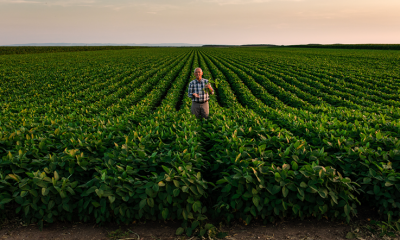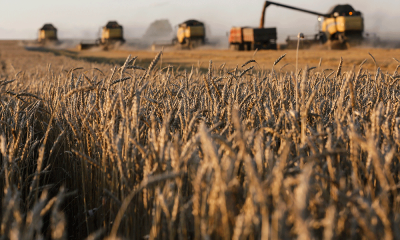411
South Africa Urged to Shift Agricultural Focus to Middle East and Asia Amid Agoa Uncertainty

With South Africa’s continued access to the African Growth and Opportunity Act (Agoa) in doubt, local agricultural experts are urging the government to turn its attention to friendlier markets in the Middle East and Asia.
Wandile Sihlobo, chief economist at the Agricultural Business Chamber of South Africa, says that it’s time to move swiftly and decisively. “We should be preparing for a future without Agoa benefits,” he said, pointing to countries like China, India, and Saudi Arabia as priority trade partners.
A Market with Untapped Potential
While South African products already have some presence in the Middle East, Sihlobo argues that the country remains on the sidelines in many key markets. “In Saudi Arabia, for instance, we account for just 1% of their $25 billion annual agricultural imports,” he noted.
Similarly, in the UAE, where agricultural imports total $22 billion annually, South Africa ranks 16th with a mere 2% share. In Qatar, the country has a slightly stronger position—10th overall—but still only commands 2% of the market.
These numbers suggest there’s room to grow—especially in categories like meat products, grains, oilseeds, and fruits, which are in high demand in the Gulf region.
China’s Massive Appetite for Agricultural Goods
In Asia, China presents a major opportunity. The country accounted for 11% of global agricultural imports in 2023—amounting to over $200 billion. South Africa ranks 28th among China’s suppliers, making up just 0.4% ($979 million) of those imports.
While China is already a key destination for South African fruits, wine, red meat, and nuts, Sihlobo says there’s potential to expand if certain trade barriers are addressed. “Lower tariffs and easing phytosanitary restrictions could open up more opportunities,” he said.
Government Must Take the Lead
To unlock these markets, Sihlobo believes the Department of Agriculture and the Department of Trade, Industry and Competition must collaborate more aggressively. Strategic lobbying, product marketing, and addressing trade barriers should be central to South Africa’s agricultural export agenda.
“Agricultural diversification is not just smart—it’s urgent,” Sihlobo added. “If Agoa benefits disappear or are scaled back, we’ll need new markets to absorb what is shaping up to be a bumper harvest in coming years.”
A Mixed Bag for U.S. Trade
Despite the uncertainties around Agoa, the U.S. still matters—especially for certain products. The U.S. absorbed 4% of South Africa’s $13.7 billion in agricultural exports in 2024, with industries like citrus, grapes, wine, and fruit juices especially reliant on that market.
But Sihlobo warns that the future of trade with the U.S. may involve complex tariffs. “We’re expecting a baseline 10% duty, with additional charges depending on the product,” he explained. “The total tariffs could go up to 60%, depending on how the U.S. evaluates trade reciprocity.”
A Future Beyond Agoa
While final decisions on South Africa’s Agoa status are pending, the broader takeaway is clear: future-proofing the country’s agricultural trade means pivoting now.
“The time to act is now,” Sihlobo stressed. “If we don’t secure and grow our presence in emerging agricultural markets, we’ll fall behind just when we need to push ahead.”
{Source Freight News}
Follow Joburg ETC on Facebook, Twitter , TikTok and Instagram
For more News in Johannesburg, visit joburgetc.com



























